SCALING UP SCOPE
OF SERVICES AND TEAM

Scaling up of services and teams is always a tricky part. Processes that start up as pilots, once successful require replication of results across a bigger spectrum of services as well as across a bigger team. This usually requires a planned effort and proper reporting structure on both the service providers as well as the clients end.
As part of this case study, we shall explore the various challenges and considerations while scaling up RPO operations and then go on to illustrate a few successful implementations of the same.
POINTS TO CONSIDER
case, it is important to understand the challenges that come with such a scale-up and how to tackle them
effectively.
Instantaneous Scaling vs Gradual Scaling
It is always advisable to scale in a gradual manner as against instantly as it allows each batch of team members to come in and adapt to the process. Also, managing 2 or 3 new resources and bringing them up to speed is much easier, quicker and economical than 5.
A designated ramp- up procedure
When planning to add a few resources at regular intervals it is important to have a training and ramp up process is in place. This streamlines the process and also ensures that all recruiters have undergone a standard procedure and no confusion exists. This also helps in reducing the ramp-up time for each new batch
A designated ramp- up procedure
Process Setup
With a bigger team it is essential to ensure that the process is set up to accommodate the same. A proper reporting structure, task assignment, team coordination, etc. Each process is different and both the client and the RPO provider need to collaborate to setup a process which serves the need of the client in the best way possible. RPO Provider needs to ensure that it engages with all stakeholders to factor in their needs while setting up the process.
Effective tracking
With a bigger team it is also advisable to have either an ATS or a tracking mechanism as the volume of work and/or submissions can at times be quite overwhelming and proper tracking ensures that nothing seeps through the cracks.
Effective tracking
Regular Communications
When scaling up a team, it is important to ensure that a proper communication structure is implemented at both the RPO provider’s end as well as the client’s end. A bigger team needs a coordinated approach which can only be achieved through effective communication.
This can be ensured through daily team calls, assigning of a single go-to person at both the RPO provider as well as the client and regular conversations between the authorized reps on both ends to discuss performance and strategy.
Scale vs Output
One of the most important things to understand about a scaling up an RPO operation is to understand that doubling the size of the team does not necessarily double the output. It is not to say that the output will remain the same. It will increase and may even double. But it cannot be a rule of thumb and it needs proactive planning and steps to ensure that the best output is received.
A crucial reason for the same is overlapping of efforts. A bigger team of RPO professionals working on the same requirement will be duplicating its own efforts i.e. contacting the same candidates over and over again by different recruiters. Also, a bigger team of recruiters does not transcend to a bigger candidate pool. It does enable the team to move faster and reach all candidates in a shorter span of time than a single person would.
It is prudent to assign each team member separate tasks to ensure maximum output.

